
Janmashtami – also known as Krishna Janmashtami, Gokulashtami, or Sri Krishna Jayanti – is one of the most joyous and devotional Hindu festivals, celebrated with immense enthusiasm across India and by devotees worldwide. This sacred day marks the birth of Lord Krishna, the eighth avatar of Lord Vishnu, who descended on earth to protect dharma, annihilate evil, and guide humanity towards righteousness. The celebrations are filled with chants of “Hare Krishna Hare Rama”, beautifully decorated temples, devotional songs, midnight prayers, and fasting rituals.
But Janmashtami is not just about grand decorations and joyous gatherings – it is about deep spiritual symbolism, historical legends, and personal transformation through devotion.
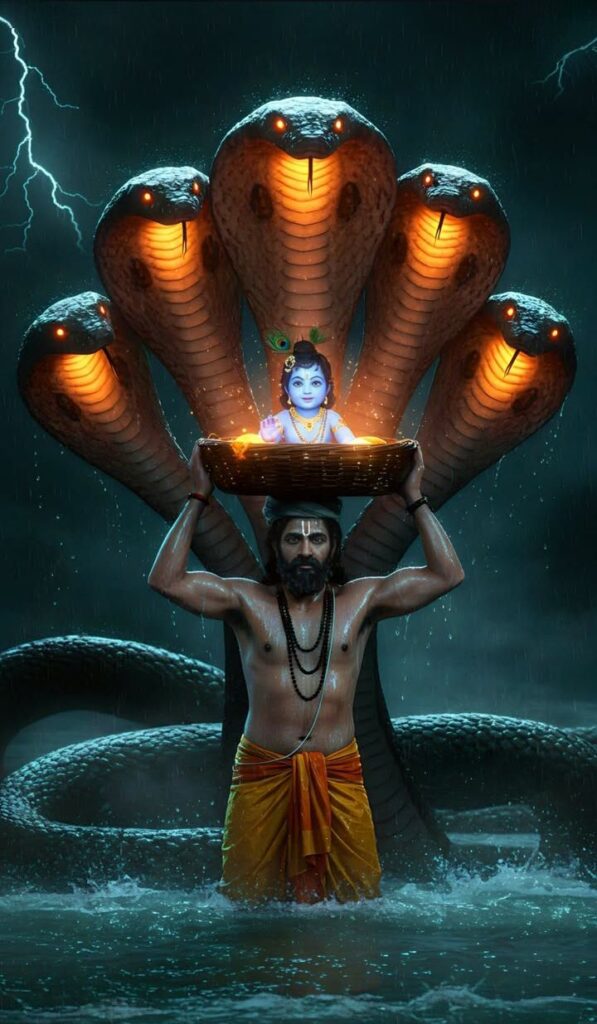
The Birth of Lord Krishna
According to Hindu scriptures, over 5,000 years ago, the land of Mathura was under the cruel rule of King Kansa. A prophecy declared that the eighth child of his sister, Devaki, would be the cause of his downfall. Blinded by fear and ego, Kansa imprisoned Devaki and her husband Vasudeva, killing each of their newborns one by one.
When Devaki was pregnant with her eighth child, a series of divine events unfolded. On the night of Krishna’s birth, heavy rain poured down, and the Yamuna River swelled, yet divine protection surrounded the newborn. Lord Vishnu appeared to Vasudeva and Devaki, revealing that their son was no ordinary child but the Supreme Being himself, who had taken birth to restore dharma.
Vasudeva was instructed to take the baby to Gokul and leave him in the care of Yashoda and Nanda Maharaj. Miraculously, the prison gates opened, the guards fell into deep sleep, and the Yamuna parted to allow Vasudeva to cross. This midnight journey ensured Krishna’s safety, and thus began his life among cowherds, where he would grow up performing miracles, defeating demons, and enchanting the world with his divine play (Leela).
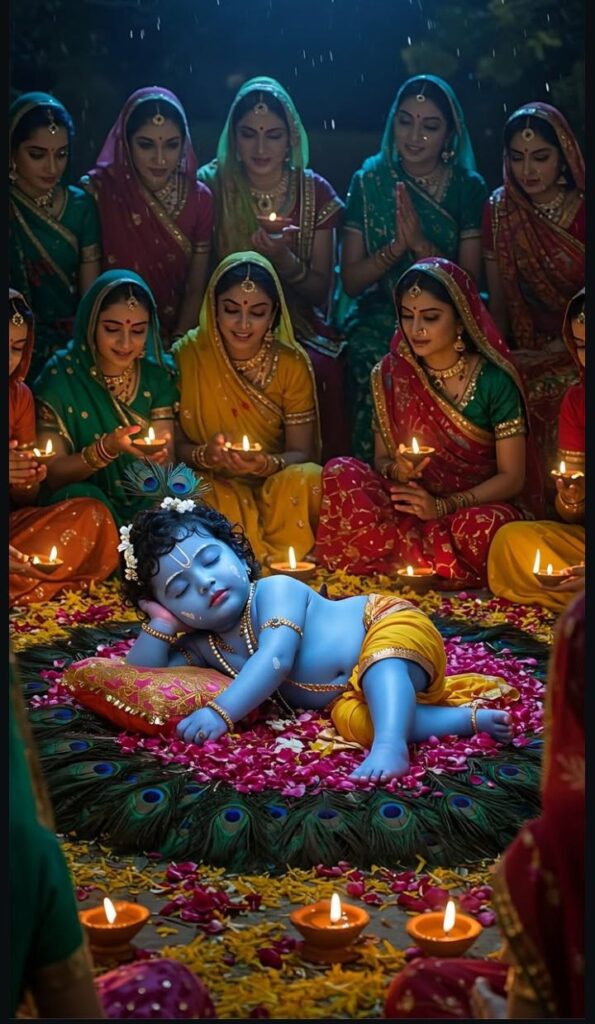
Victory of Good Over Evil – The story symbolizes the destruction of arrogance and cruelty, represented by Kansa.
Divine Protection – Just as the universe conspired to protect Krishna, it is believed that divine energy protects those with pure devotion.
Surrender to the Divine – Krishna’s life teaches that faith and surrender to God lead to liberation.
Symbol of Love and Joy – His playful Raasa Leela and deep connection with devotees show that spirituality can be joyful, not just austere.

While customs vary from region to region, the essence of Janmashtami rituals is devotion (bhakti), fasting, and celebration of Krishna’s birth at midnight.
Devotees observe either a full fast (without food and sometimes without water) or a partial fast (consuming fruits and milk).
The fast is broken after midnight, once the puja is complete.
The idea behind fasting is self-purification and focusing the mind on Krishna without distraction.
Tip: Many devotees chant the Mahamantra all day –
“Hare Krishna Hare Krishna, Krishna Krishna Hare Hare, Hare Rama Hare Rama, Rama Rama Hare Hare”
Temples and homes prepare a small cradle decorated with flowers.
An idol of baby Krishna (Bal Gopal) is placed inside, symbolizing his arrival into the world.
Devotees take turns gently swinging the cradle while singing bhajans.
At midnight, the idol of Krishna is bathed with Panchamrit – a mixture of milk, curd, honey, ghee, and sugar – along with sacred water, tulsi leaves, and sandalwood paste.
This ritual represents purification and offering of love to the Lord.
The exact moment of Krishna’s birth (Nishita Kaal) is celebrated with bells, conch blowing, and chanting.
Devotees decorate the temple or home altar with flowers, lights, and peacock feathers.
Stories from the Bhagavata Purana and Bhagavad Gita are recited.
Raas Leela – In Vrindavan and Mathura, dramatic enactments of Krishna’s youthful days, his play with the Gopis, and his battle with demons are performed.
Dahi Handi – In Maharashtra, particularly Mumbai, a pot filled with curd, butter, and sweets is hung high, symbolizing Krishna’s love for butter. Teams form human pyramids to break the pot, accompanied by music and cheering.
After the midnight aarti, devotees prepare and offer Krishna’s favorite foods such as Makhan Mishri, Panjiri, Peda, and Tulsi leaves.
Once offered, the food is distributed as prasadam, symbolizing blessings.
Recitation of verses from the Bhagavad Gita, Vishnu Purana, and Harivamsa Purana is common.
This is considered a way to connect with Krishna’s wisdom and teachings.
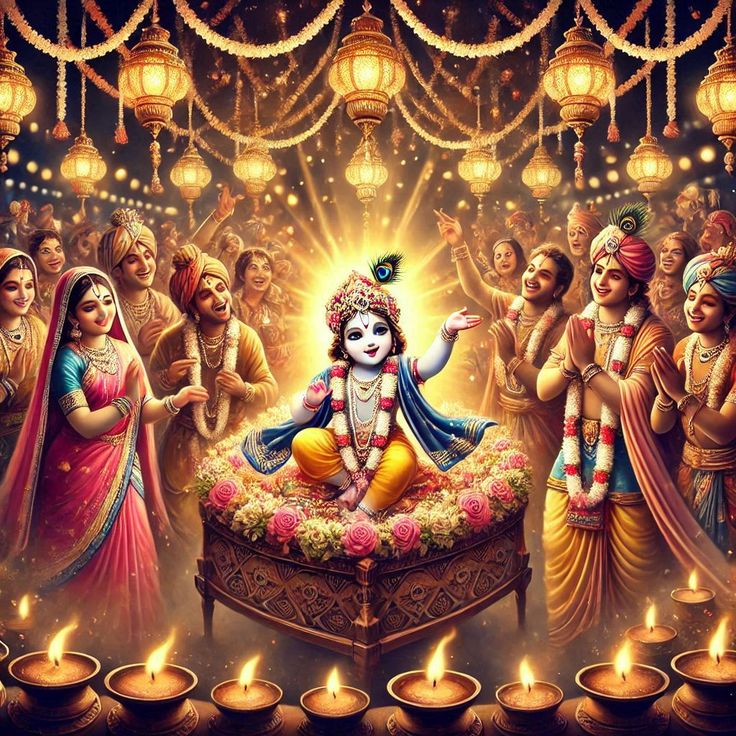
Mathura & Vrindavan (Uttar Pradesh)
Celebrations last for a week, with vibrant processions, jhankis (tableaux), and Raas Leela performances.
Thousands of devotees gather at Dwarkadhish Temple and Banke Bihari Temple.
Maharashtra
Famous for Dahi Handi events inspired by Krishna’s butter-stealing adventures.
Participants wear colorful costumes, and prize money is given to winning teams.
Gujarat & Rajasthan
Devotees throng to Dwarka, the kingdom ruled by Krishna, offering special prayers at Dwarkadhish Temple.
South India
Houses are decorated with little footprints drawn from the entrance to the puja room, symbolizing Krishna entering the home.
In Tamil Nadu and Karnataka, devotional singing (Nama Sankeertana) continues through the night.
International Celebrations
ISKCON temples worldwide celebrate Janmashtami with grandeur, attracting people from different cultures to Krishna consciousness.
Deeper Symbolism in Janmashtami Rituals
The Midnight Birth – Symbolizes the awakening of the soul when the world is in deep ignorance.
The Cradle – Represents the heart where Krishna should reside.
Butter – Symbol of the pure essence of the soul, which Krishna loves.
Breaking the Pot (Dahi Handi) – Represents breaking the ego to attain divine love.
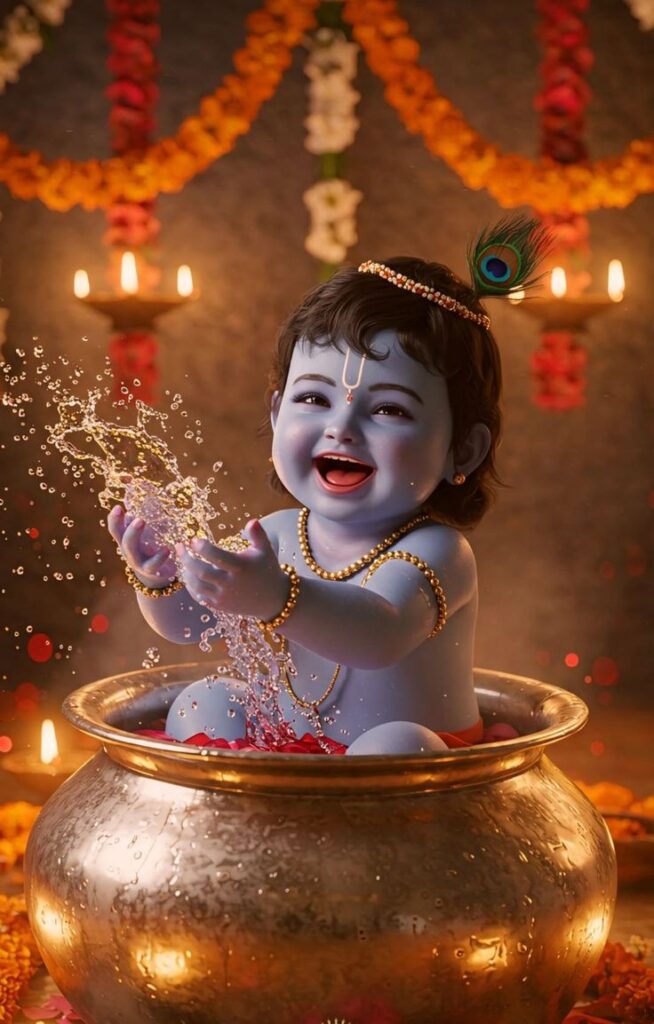
In today’s fast-paced life, Janmashtami is more than a religious observance – it’s a reminder:
To protect truth in our lives, just as Krishna destroyed evil forces.
To find joy in small moments, like Krishna’s playful nature.
To live with compassion and love, embracing all beings equally.
To balance duty and devotion, as Krishna guided in the Bhagavad Gita.
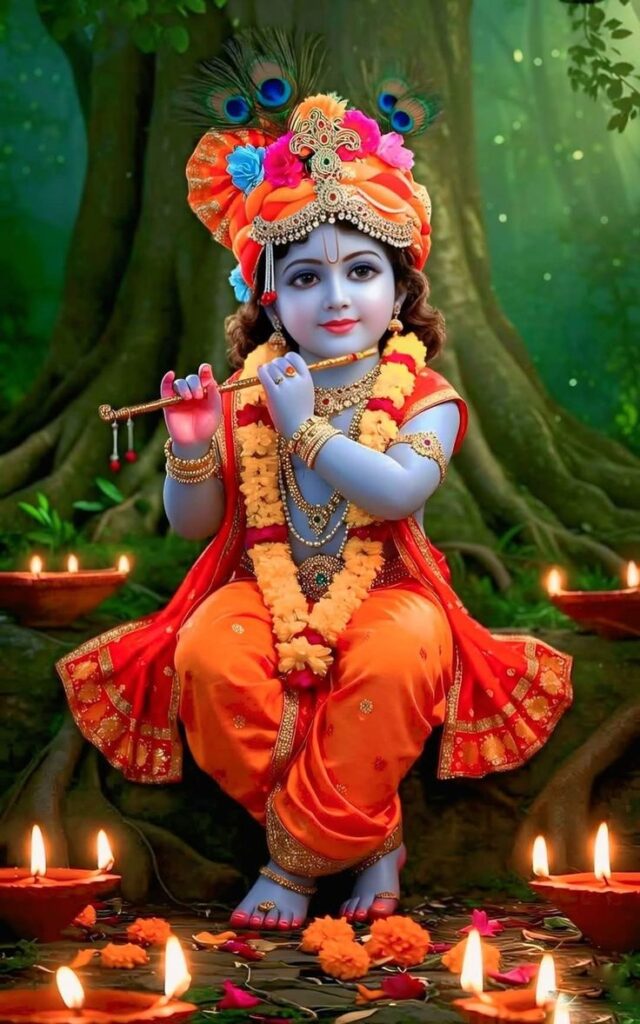
Nishita Kaal Puja Time – Around midnight
Parana Time – After sunrise next day, once Ashtami Tithi ends
(Exact timings vary by location and should be checked from a reliable Panchang.)
Janmashtami is not just a festival; it’s a celebration of hope, divine love, and righteousness. The rituals bring communities together, the chants uplift the spirit, and the story of Krishna’s birth reminds us that even in the darkest times, divine intervention restores balance. Whether you celebrate with a simple prayer at home, participate in temple festivities, or watch the joyful Dahi Handi, the essence lies in devotion and living the values Krishna embodied.
As the conch blows at midnight and the air fills with chants of “Govinda Bolo Hari Gopal Bolo”, it’s a reminder that God’s love is ever-present – all we need is an open heart to receive it.
Author – Amit Pradhan
👉 If you liked this article or, then do write us in the comment section below.
For Astrology, Numerology, and Reiki Services contact us today!
We also deal in original quality and Certified Rudraksha, Crystals and Gems.
👉 Shop Now Original Rudraksha & Crystals
For more daily updates do like and Follow Us and keep visiting www.jaymahakaal.com